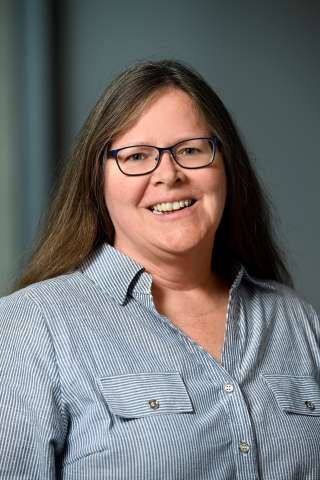
Q&A: Ann Rose
May 9, 2019
Surrounded on three sides by the Potomac and Patuxent Rivers and the Chesapeake Bay, St. Mary’s County in southern Maryland boasts an impressive 500 miles of waterfront. The county’s mix of people and economic activities include an active naval airbase as well as Amish and Mennonite farming communities. In this rural county, home to 105,151 people and located just 80 miles southeast of Washington, many residents and businesses use individual wells and septic systems where public utilities are not available.
As an environmental health specialist supervisor at the St. Mary’s County Health Department, Bloomberg Fellow Ann Rose has spent more than 30 years making sure the county’s water is safe for humans. We talked to her about her work, what she’s learned from interns and how her master’s studies at Johns Hopkins Bloomberg School of Public Health are helping her move toward a more proactive approach to environmental health policy.
What issues relating to water quality do you manage?
Two major components of my job involve recreational beaches and drinking water at transient non-community, or TNC, public water systems. Qualifying TNCs are typically small public water systems, such as churches and restaurants with an individual well, that are providing water to the public. In that space, our job is to ensure they are complying with the Safe Water Drinking Act, which involves regulations set on the federal level.
Through our recreational beach monitoring program, we check the water quality at public beaches to ensure bacteria levels in the water don’t exceed state standards. There’s an increased risk of gastro-intestinal illness if people inadvertently ingest the water when certain bacteria are present in dangerous quantities, so it’s important to inform the public in order to promote a safe and healthy beach experience.
What drew you to the master’s program at the Bloomberg School?
Two years ago, our health department hosted a few interns and I worked with them on a project reviewing data from our drinking water wells related to arsenic, which in high concentrations can cause cancer and skin changes. One of the interns was working on a statistical analysis of the data. She asked me whether the results were statistically significant or not, and I had no experience with that. Working with those interns made me realize that we have access to so much information through our health department that we collect as part of our routine work regulating waters, and I wanted to be able to take that data and go further with it to help our community.
What are you hoping to take away from your time at the Bloomberg School?
Because we are given authority by federal and state departments, much of our work concerns providing education and ensuring compliance with established regulations and statutes. However, there are public health risks we’re finding now that don’t have any standards or regulations in place, such as emerging concerns with vibrio and harmful algal bloom. In these areas, we have the opportunity to step in and decide how to best inform and protect water users. I’m hoping to find a way to better fill those gaps with evidence-informed policy in addition to teaching people about existing public health risks so they can enjoy our water safely. I’m especially looking forward to incorporating what I’ve learned to better provide guidance to our recreational water users.
Connect With Us
Receive all the latest news from the Initiative by signing up for the American Health Dispatch newsletter, subscribing to the American Health Podcast, and subscribing to our YouTube channel.
Contact Us